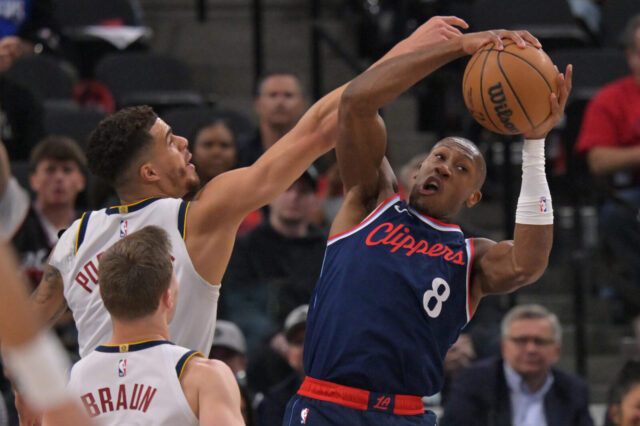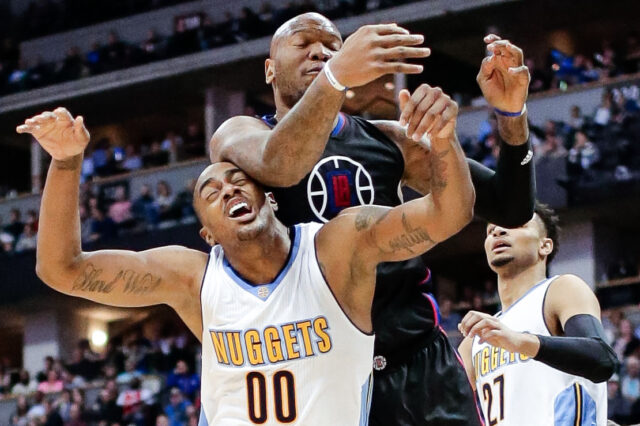There was a great video that went viral a few years back about the way that wolves changed the rivers in Yellowstone National Park. As the video explains, wolves were reintroduced to Yellowstone in 1995 and through a series of fairly small, perhaps somewhat unexpected chain reactions, the ecosystem began to shift dramatically. First, the behavior and populations of the various animals in the park changed, including the way that deer and elk began avoiding certain areas of the park. With less foot traffic, the vegetation began to grow in places that it had not grown in decades and trees reached heights that they had not in decades. The effects rippled all the way down to the physical geography of the park, including the rivers.
This phenomenon is called a "trophic cascade." One change to the top of the food chain has wide and sometimes unexpected results all the way down to the bottom of the food chain and beyond. It’s such an interesting example of the interconnectedness of ecosystems. Similar ripple effects are observable in biological evolution, where changes in climate alter the direction of a species over the course of millions of years. These ripple effects are also observable in society where seemingly small changes to housing regulations can change the demographic of a city.
The game of basketball is no different. In fact, the game is best thought of as the eternal recurrence of a million micro-decisions and micro-adjustments. In some cases, setting a screen just two feet to the left can be the difference between creating an efficient shot and creating a turnover. In most cases, those tiny, subtle changes are difficult to observe, especially in real time. Coaches, players, scouts, and analysts often began at the end of a play – a missed shot, turnover, or assist – and attempt to work back to figure out what went right or wrong.
Let's look at two early trends this season and attempt to deconstruct what might be going on.
The Change: pick and roll strategy
The Effect: Changes to interior and perimeter defense
Last season, the Denver Nuggets ranked near the bottom of the league in opponent three-point efficiency. One of coach Michael Malone’s core values seemed to be an emphasis on protecting the paint, even at the expense of other types of shots. As a result, the young Nuggets allowed opponents to score right around the league average points in the paint while conceding the 4th most assisted three-point opportunities and the 4th most three-pointers from the corners.
This season, the Nuggets made a change to their pick and roll coverage. They’re providing less help from weakside players that are not directly involved in the pick and roll and are dropping their bigs deeper into the paint. And while the Nuggets returned nearly the exact same core of players that they had on the roster last season, the defensive numbers are very different. The Nuggets are now allowing the 2nd most points in the paint but are holding opponents to a league average number of assisted three-point opportunities and the fewest amount of three-pointers from the corners.
| Opponent points in the paint | Opponent 2FGA from >16 ft (mid-range) | Opponent assisted 3FGA | Opponent 3FGA from the corners | |
| 2015-16 Nuggets | 15th (most) | 22nd (most) | 4th (most) | 4th (most) |
| 2016-17 Nuggets | 2nd (most) | 1st (most) | 19th (most) | 25th (most) |
These numbers may even out or even revert back to last season's numbers by the end of the year. But it's fairly evident from watching the team that they are conceding mid-range shots and allowing players to contest the team's trio of bigs at the rim one-on-one. In addition to the declining rim protection, the Nuggets are also allowing the highest percentage of opponent FGA from the mid-range. That is a good thing as mid-range shots are typically the least efficient shots in basketball. But if changing their pick and roll strategy was the releasing wolves back into Yellowstone of the Nuggets defense, and allowing more points in the paint is the changing rivers end point, then the Nuggets need to evaluate what things in between point A and point B can be improved or altered.
Turnovers and 3-point shooting
Another issue facing the Nuggets this season has been turnovers. Coming into the Phoenix game, five key Denver Nuggets players were turning the ball over at a career-high rate: Emmanuel Mudiay, Nikola Jokic, Jusuf Nurkic, Wilson Chandler, and Jameer Nelson. The first three are all young and so it’s possible that the turnovers are due to their increased workload, a sophomore/third year slump, or increased scouting from opposing teams. But why are Wilson Chandler and Jameer Nelson turning it over so much?
One possibility is that the Nuggets were crowding the paint with the Balkan Buddy Ball lineup and other lineups that lack enough spacing.
Take a look at the table below. The Nuggets as a team turn the ball over the third most in the NBA at 15.5 turnovers per 100 possessions. However, they turn it over noticeably less when there is only one big on the court and turn it over significantly more when the front court features both Nurkic and Jokic or Nurkic and Kenneth Faried.
| Turnovers/100 | 3FG% | 3FGA/100 | eFG% | TS% | |
| Jokic-Nurkic | 23.1 | 35.1 | 21.6 | 47.1 | 51.8 |
| Faried-Nurkic | 21.8 | 33.0 | 24 | 44.8 | 49.5 |
| Faried-Jokic | 14.0 | 37.2 | 35.5 | 48.8 | 54.4 |
| Nurkic | 13.6 | 23.1 | 18.6 | 50 | 55.7 |
| Jokic | 17.1 | 45.2 | 30.4 | 55.4 | 59.2 |
| Faried | 14.7 | 35.4 | 34.5 | 44.3 | 49.7 |
Equally as noticeable is the shift in the types of shots the Nuggets get with different front court combinations, specifically three-point attempts. When the Nuggets play with Nurkic and Faried or Nurkic and Jokic, they are shooting well below league average from behind the arc, both in efficiency and in volume.
This is somewhat intuitive. Two non-shooting bigs will clog up the paint and make it easier for defenders on the perimeter to stick closely to their man since there isn’t much room inside the painted area to penetrate. However, a lower three-point attempt rate doesn’t mean that those lineups are useless or even bad offensively. The Nuggets owned the offensive glass in twin tower lineups and drew fouls at a league-high rate when both bigs were on the court together. The difficulty for the coaching staff is to first find out if the good those lineups provide outweigh the bad, and second, figure out if there are ways to showcase the good and improve the bad.
Lots of things happen on every possession in basketball, throughout a 48-minute NBA basketball game, and over the course of an entire NBA season. Rarely do events happen on a basketball court that aren’t interconnected to a dozen or more other things. It’s rarely enough to look at a stat and say "this player is good" or "this guy can’t shoot" or "this guy can’t defend." It’d be akin to looking at the rivers in Yellowstone and saying "these rivers just changed."
The role of a coach, player, and basketball analyst is to try and find the root cause of a player’s shooting issues, a team’s turnover problems, or three-point shooting woes. It's important to ask why as far down as you can. NBA players are so talented that rarely do their issues exist in a vacuum. Some guys can’t shoot, some can’t defend, and some can’t chew gum and walk at the same time but all of those things can often be improved by seeking and identifying the root cause.


